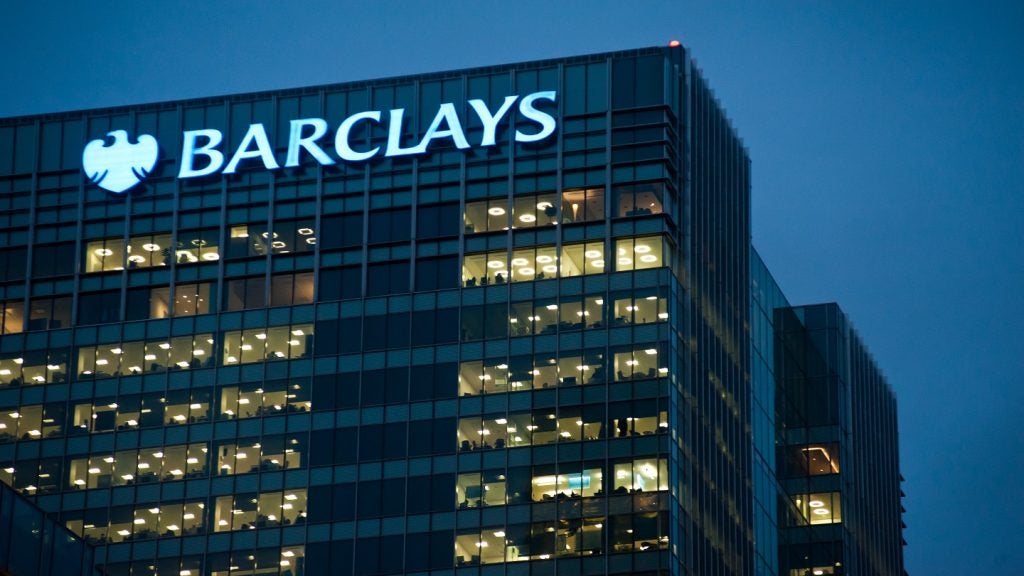 Walk into any
Walk into any
city, town or pueblo in Mexico and you will find either a branch of
Banamex, a Banamex ATM or a billboard with one of Banamex’s many
consumer products on display.
The bank ranks second in the
country in terms of size and boasts more than 20m customers – more
than one sixth of Mexico’s entire population.
But Banamex was not always
the Latin American giant it is today. With origins that trace back
to 1884, it came into existence through the merger of two smaller
banks, Banco Nacional Mexico and Banco Mercantil
Mexicano.
In the early days, Banamex
offered only a limited suite of products focussed mainly on deposit
taking and had a branch presence in only half a dozen mid-sized
towns.
Over the past 123 years this
picture has changed. It has grown to become the second largest bank
in Latin America’s North with 1,667 branches, 5,787 ATMs and more
than 30,000 retail banking staff.
Its customer proposition has
multiplied many times over and now includes credit services, loans,
pensions, asset management and insurance.
How well do you really know your competitors?
Access the most comprehensive Company Profiles on the market, powered by GlobalData. Save hours of research. Gain competitive edge.

Thank you!
Your download email will arrive shortly
Not ready to buy yet? Download a free sample
We are confident about the unique quality of our Company Profiles. However, we want you to make the most beneficial decision for your business, so we offer a free sample that you can download by submitting the below form
By GlobalDataIn 2001, Citigroup spied its
potential and bagged the brand for an estimated $12.5bn, prompting
a series of copycat moves from foreign players.
A year later, HSBC acquired
Mexico’s Bitel bank, Canada-based Bank of Nova Scotia snapped up
Inverlat in 2003 and Spain’s BBVA bought a minority share in
Bancomer a year later.
Today, the country’s
rapidly-growing middle class segment has caught the attention of
global financial institutions and analysts predict an avalanche of
interest over the coming years.
Tapping into the
unbanked
 Having
Having
established an enviable position within the Mexican market, Banamex
head of retail banking Ernesto Torres Cantu, tells RBI his
biggest test is to reach out to the country’s large unbanked and
underbanked population.
“Our main challenge as a
country is the unbanked population. The banked population is a
small pie for everyone so we have to increase the size of the
banked population. This is a huge opportunity,” he says.
“When we think of unbanked
people, we tend to think of poor people, but this is a mistake. In
Mexico, the unbanked population exists throughout the wealth
pyramid,” Cantu adds.
Underpinning the relatively
low penetration of banking services within Mexico are two main
factors. An historic scarcity of banks in the country has led to
fewer people accessing banking services compared to some developed
countries.
Today, 57% of municipalities
lack access to one bank or a microfinance institution, according to
Mexico’s National Banking and Securities Commission. For those who
do have access to banks, a perception of high charges and fees has
traditionally posed a problem for customers on low and middle
incomes.
But this situation is
changing.
Last year Mexico’s economy
grew by more than 5%, considerably more than in some developed
countries which have been more adversely affected by the global
financial crisis.
Am new jobs are expected to
be created in Mexico over the coming years and the wealth pool
among Mexico’s growing middle class is making it increasingly
likely that more residents will open bank accounts. Not doing so
can be detrimental.
 Data gathered by
Data gathered by
the World Bank shows that Mexico’s poor and unbanked pay more to
get paid, make payments, save and borrow than those who have bank
accounts. Cash transactions cost up to five times more than cheque
payments and this in turn can cost up to 15 times more than
electronic payments.
Families in urban centres
like Mexico City and Bogota with no bank account face personal
risks when keeping large sums of money around for bill
payments.
It is with this in mind that
Cantu has been working to develop a retail banking proposition
which actively targets the unbanked and underbanked in
Mexico.
“We are planning on launching
a new product which links into mobiles, called the MWallet. It will
be an offer on the mobile channel for the unbanked population,” he
says.
Cantu is unable to provide
further details about the product, but says it could be on the
market as early as the third quarter of this year and with close to
100% of Mexico’s adult population owning a mobile phone, the
proposition has the potential to increase significantly the bank’s
market penetration.
In spite of the sizeable
growth prospects, Cantu maintains a measured approach, aware it may
take some years for the unbanked population to begin contributing
significantly to Banamex’s revenues.
“Banking the unbanked is a
medium- to long-term job because you have to first bank the new
customers, then get to know them and then increase revenues through
lending to them.
“The revenues in the unbanked
population will come more from credit than from debit, so the main
impact will be felt two or three years from now.”
Within the unbanked sector,
it is the middle class wealth bracket where he sees most
potential.
“What has happened is that
the middle class has started growing significantly and so in terms
of revenues and the numbers of customers, the mass-affluent middle
class segments will be increasing significantly so we are expecting
a good incremental growth in that segment.”
Cantu’s forecast is
well-grounded. A report published by accountancy firm
PricewaterhouseCoopers (PwC) describes rapid growth of the middle
class in Mexico as a principal driver in the country’s future
growth prospects.
Mexico is presently one of
the seven largest emerging markets in the world alongside China,
Russia, Brazil, India, Indonesia and Turkey. PwC’s analysis,
The World in 2050, forecasts Mexico could actually surpass
some developed countries in less than 40 years.
It predicts Mexico could
overtake Canada in terms of GDP at market exchange rate (MER)
rankings by 2024 and Spain by 2025. In terms of GDP at purchasing
power parity, it forecasts Mexico could overtake that of France by
2028 and the UK’s by 2031.
Last year Banamex gained
almost 1.1m new customers and Cantu is confident it will bring on
board comparable numbers by the end of this year. One method he has
used to attract such high numbers is by capitalising on the bank’s
reputation amongst corporate entities.
“We are very strong players
in the corporate and local commercial banking companies
businesses,” Cantu explains.
“When we service a company we
enter the company as a bank and we offer our services to their
employees.
“This has provided a major
source of new customers for the bank with about half of our new
customers coming into Banamex from this channel.”
He is also proud of the
bank’s reputation for customer service and says the selection
process of staff underpins the bank’s retention of existing
customers and attraction of new ones.
“For the last four years we
have been one of the top companies to work for in Mexico,” Cantu
says. “If you don’t have the right people and if the people that
work with you are not happy doing their job there is no way you can
service your customers.
“This year we were number 16
in Mexico in terms of being the best place to work at and we are
also in the top five companies to start your career at.
“We keep attracting new and
bright people to work at the bank and all of Banamex’s successes
ultimately derive from this.”
 Cantu has also
Cantu has also
been active in growing Banamex’ product proposition for clients. In
February, the bank teamed up with commercial airline carrier
Aeromexico to launch a co-branded credit card targeted at customers
in the bank’s premium segment. Eligible customers receive discounts
on Aeromexico’s routes, and Aeromexico’s Platinum and Gold card
fees.
He says: “So far, take-up has
been very good and in the future we intend to do a product launch
with a banking service that links to the Diesel space.”
Last January, he says the
bank launched an internet-based banking service targeted at the
18-35 year old age category. The service, a virtual bank branded
Blink, is now providing new retail customers with a credit card,
cash and card payment transfer services and a selection of retail
funds in which to invest.
If past results are anything
to go by, the strategy of launching new credit card offerings is
one which may prove fruitful. In 2010, much of Banamex’ growth was
driven by large increases in credit.
The credit portfolio reached
MXN328bn ($27.8bn) driven by strong demand for credit among
families. Family credit grew 11% while short-term loans grew from
MXN14.1bn in 2009 to MXN20.6bn in 2010.
Consumer loans increased from
MXN89.9bn to MXN95.1bn and residential mortgages increased by 21%
to MXN49.1bn.
Cantu says a finely tuned
customer service proposition underpins the consistently high levels
of growth seen in this segment.
“The credit quality that we
are underwriting at the moment is the best credit quality we have
had in the last five years,” he says.
“This is derived in part from
our strategy of gaining and getting to know well our new
customers.
“We provide the customer with
deposit facilities and when we have established a relationship and
assessed their needs we proceed to provide credit.”
Across other areas of the
bank, assets under management grew 17%, resources invested in
mutual funds jumped 62%. Comprehensive deposits increased by 12%
compared to the end of 2009 while deposits on demand increased by
26% year-on-year.
With such strong results it
is little wonder that international players are beginning to take
note of the Mexican banking market.
Is Cantu concerned by the
potentially imminent influx of foreign banks competing for the same
large slice of the unbanked Mexican population? He takes a rounded
view of the question.
“Competition is something that you always have to take
into account. However, the service offering we have in the market
is difficult to replicate. As long as we are able to maintain our
service to our customers and our promises to customers that is
fine. Ultimately, competition only makes you better.”







